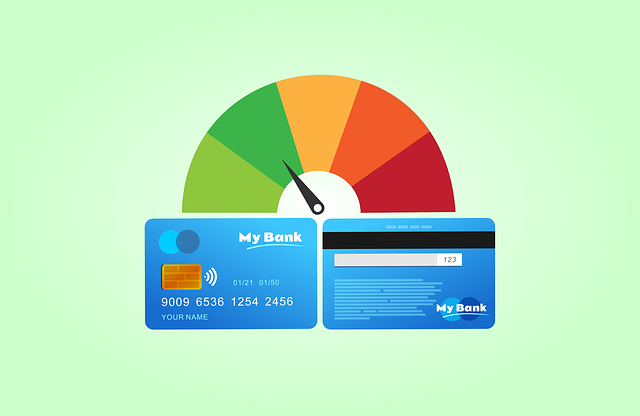Invoice financing offers businesses a flexible funding solution by converting outstanding invoices into immediate cash flow. Benefits include quick access to capital, transparent terms, and no hidden fees, ideal for managing cash flow gaps or growing operations. However, it involves higher interest rates and requires careful consideration of customer relationships and provider terms. Successful application requires evaluating providers based on interest rates, funding speed, and alignment with business goals, making this method a powerful tool for tailored cash flow management.
In today’s dynamic business landscape, understanding efficient cash flow management is crucial. Among alternatives, invoice financing stands out as a game-changer, offering significant invoice financing benefits over traditional loans. This article delves into the how invoice financing works and explores its pros and cons. We weigh the options of invoice financing vs loans, guide you through the applying for invoice financing process, and help you navigate the invoice financing providers landscape to unlock your business’s full potential.
- Understanding Invoice Financing: Unlocking Cash Flow Potential
- Invoice Financing Benefits: A Game-Changer for Businesses
- How Invoice Financing Works: Simplifying the Process
- Invoice Financing vs Traditional Loans: Weighing Your Options
- Applying and Choosing Providers: Navigating the Invoice Financing Landscape
Understanding Invoice Financing: Unlocking Cash Flow Potential

Invoice financing offers a unique alternative to traditional loans, providing businesses with an opportunity to tap into their outstanding invoices as a source of working capital. This funding method allows companies to unlock immediate cash flow by selling their accounts receivable at a discount. Unlike conventional loans that require collateral and strict repayment terms, invoice financing is designed to be more flexible. Businesses can maintain control over their invoices while receiving funding based on the value of these pending payments.
Understanding how invoice financing works involves recognizing its potential benefits. It provides quick access to funds, which can help businesses manage cash flow gaps, fund growth, or cover unexpected expenses. Additionally, there are typically no hidden fees or complex structures associated with this type of financing. However, it’s essential to consider the pros and cons, such as interest rates and potential impact on customer relationships. When applying for invoice financing, businesses should research reputable providers who offer transparent terms and support tailored solutions based on their needs.
Invoice Financing Benefits: A Game-Changer for Businesses

Invoice financing benefits can be a game-changer for businesses, especially those dealing with cash flow challenges. Unlike traditional loans that often require collateral and strict repayment terms, invoice financing focuses on the value of your outstanding invoices. It’s an alternative financing method where businesses sell their accounts receivable (invoices) to a third-party provider at a discount, effectively providing immediate access to capital. This process not only boosts cash flow but also simplifies the funding process since it’s based on future sales rather than historical financial statements or assets.
How invoice financing works is straightforward. Businesses apply for financing from providers who review their invoices and offer a percentage of the total value as an advance. Once approved, businesses can access funds quickly, typically within 24 hours. The provider then collects the full amount when the invoices are paid by customers. Pros and cons of invoice financing include its speed and flexibility versus traditional loans, but also potential higher interest rates and fees. Applying for invoice financing is usually simpler than loan applications, making it an attractive option for those in need of quick capital to fuel growth or manage cash flow. Various invoice financing providers offer tailored solutions, catering to businesses of all sizes and industries.
How Invoice Financing Works: Simplifying the Process

Invoice financing offers a streamlined alternative to traditional loans, especially for businesses dealing with outstanding invoices. Instead of waiting for customers to settle their debts, invoice financing providers advance funds against these pending invoices. This process is remarkably simple and involves several key steps. First, businesses apply to invoice financing companies, providing details of their invoices. Upon approval, the provider buys these invoices at a discount, essentially lending money to the business based on its future revenue. Once the customer pays the invoice, the financing company reimburses itself, minus any fees or interest agreed upon in advance.
This method provides several benefits over traditional loans, including faster access to cash, reduced administrative burdens, and no need for collateral. However, it’s not without drawbacks; fees and interest rates can vary widely, and businesses must ensure they have a steady stream of invoices to maintain financing. Prospective users should carefully consider the pros and cons before engaging with invoice financing providers, ensuring it aligns with their cash flow needs and business practices.
Invoice Financing vs Traditional Loans: Weighing Your Options

When considering funding options for your business, understanding the differences between invoice financing and traditional loans is crucial. Invoice financing benefits businesses by offering a flexible alternative to secure capital. Unlike traditional loans that rely on fixed assets as collateral, invoice financing uses outstanding invoices as security. This means you can access funds based on your future revenue streams, providing working capital without tying up your assets.
How invoice financing works involves several steps: you sell goods or services and create an invoice; once the customer pays the invoice, the financing provider disburses the funds less a small percentage for their service; this method appeals to businesses with strong cash flow but may have longer application processes compared to loans. Pros include lower interest rates, access to immediate capital, and no impact on business assets. However, cons such as potential delays in customer payments and variable fees can affect cash flow. When deciding between invoice financing and traditional loans, evaluate your business’s needs, payment history, and future revenue projections to choose the best fit. Explore various invoice financing providers to find terms that align with your goals.
Applying and Choosing Providers: Navigating the Invoice Financing Landscape

Navigating the invoice financing landscape requires a thorough understanding of its unique aspects and benefits. Invoice financing is a powerful tool for businesses looking to unlock cash flow by monetizing their outstanding invoices. Unlike traditional loans, it focuses on the creditworthiness of the business rather than personal assets, making it accessible even to those with limited collateral. The process involves collaborating with a provider who advances funds against these invoices, streamlining cash flow and providing much-needed capital for operations.
When applying for invoice financing, businesses should consider their specific needs and compare various providers. Evaluating factors such as interest rates, funding speed, and terms will help determine the best fit. Pros include faster access to funds, flexibility in repayment structures, and potential cost savings. However, cons may include variable interest rates and provider-specific fees. Choosing the right invoice financing provider is key to leveraging this alternative funding method effectively, ensuring a positive impact on cash flow management without unnecessary complexities.






